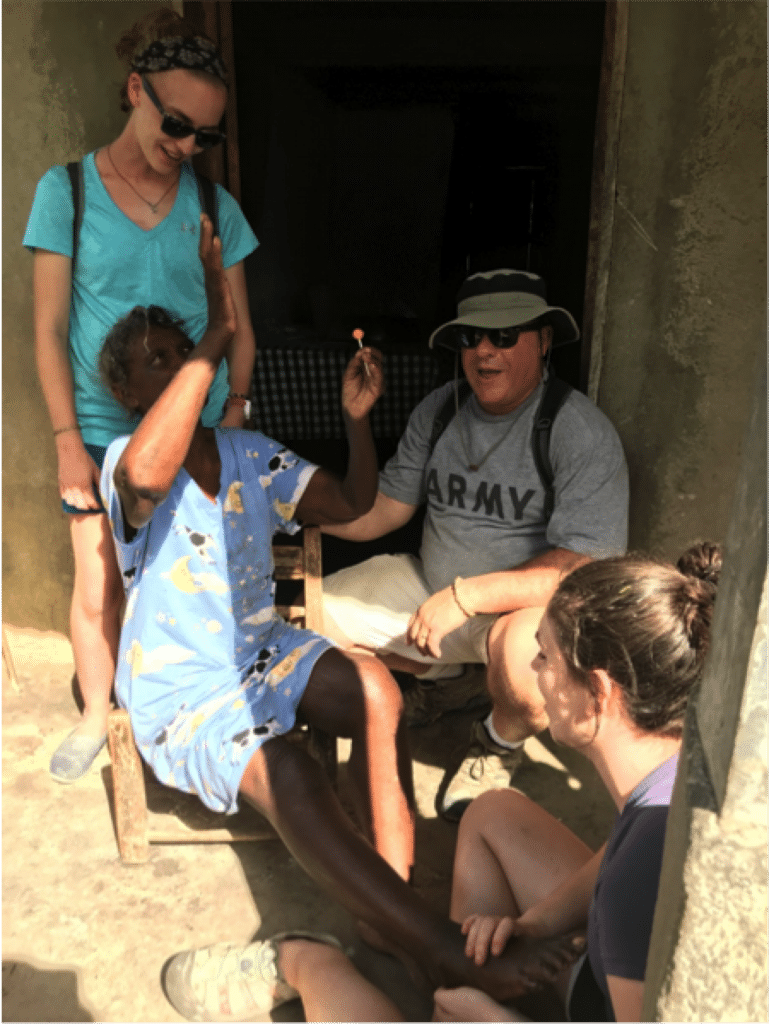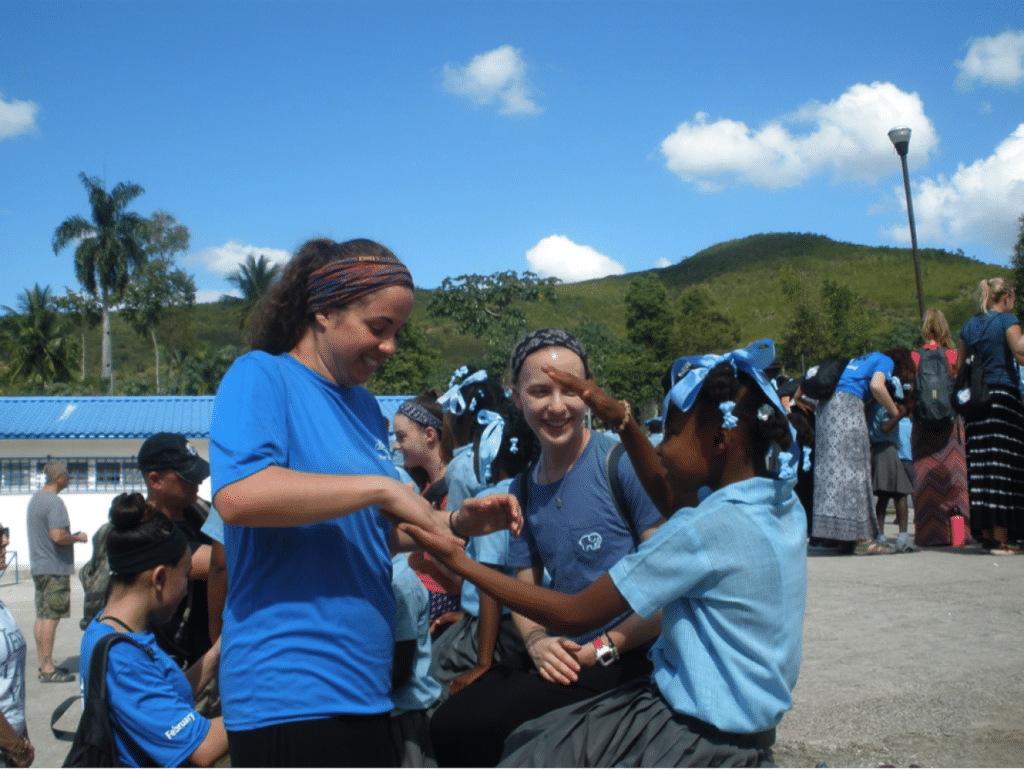Most people are familiar with the feeling of flipping through a scrapbook or journal, plastered with collected momentos and photos of times gone by–– making the concept of a collaged news article an effective and attention-capturing way to convey a story. As it can be assumed that most people have general knowledge of the 2010 Haiti earthquake, this “Rebuilding Haiti” media narrative utilizes multimedia with an educational tone to showcase the legwork that pieces together a more personal and certainly interactive side of the country’s tragedy and rebuilding. The “newsgame” brings together a format of a “choose your own ending” children’s book with the curiosity and legwork of Jonathan Katz’s The Big Truck that Went By: an effect that delivers professional news in a way that the reader personally connects with and is more likely to be impacted by.
Unlike a standardly formatted online article with mostly text accompanied by a handful of photos, the web design of “Rebuilding Haiti” is the backbone of the story. Though the writing is integral, the photos themselves, in quality and subject matter, set most of the scene. Obviously taken by a very skilled photographer, the still photos catch people in motion, dynamic and driven. Vibrant colors, vivid slums, and expressive people capture the environment and emotion behind the rebuilding efforts and energy of the Haitians. The moving video clips culminate to the same effect. Meanwhile, the subject matter of what is included and what is not included is just as telling. Photographs don’t just capture the disaster, but rather the resilience.
In contrast to a widespread issue within missionary-mentality, the photos showcase Haitians helping Haitians, ascending for their nation’s greater good without the help of outside aid. Although many of the interactive decisions do detail foreign aid, it is kept in proportion and the photos do not serve to reinforce the stereotype of white people coming in to “save” them. The photos help the reader visualize the disaster but also provide better context for respect of the culture and seeing the beauty of the country beyond the tragedy and filth of Port-au-Prince.
The interactive nature of the story, with our modern conception of what news is, seems to break out of the genre of journalism and act like an educational website in nature. It has the feel of a Prezi (dynamic presentation software used in education) or a humanitarian educational source, like the ecological footprint calculator, NASA’s Orbiting Carbon Observatory data, or NOAA’s Interactive Science on a Sphere. The reader gets to interact as if it is an educational software, as if they are a student driving forward in the material and choosing which curiosity to pursue. It also resembles an educational project that takes the form of a collage of research, stringing together interviews from experts and people on the ground with facts and figures. The captions of the photos serve as a higher level of insight with more data-based comments in a smaller font, inviting more invested readers to digest the numbers in relation to the more emotional quotes and narrative in the body of text.

Despite giving the feel of straying from journalism into education, the piece is full of evidence of legwork that makes it much more a narrative in which the reader takes part in the research on the ground–– not as much as a piece like Finnegan but certainly much more than Egger’s Zeitoun. The narrator is present, and clearly on the ground, but still removed and focusing on the topic of rebuilding Haiti. Journalistically, the transitions in the form of scrolling create abstract stepbacks and then are followed with written stepbacks. Similar to war correspondence––and perhaps purposefully drawing from that style as the after effects of the earthquake were like a warzone–– the journalist organizes the content in a map, stepping back to introduce a new area with text and photos then drilling back into narrative, in recounting interviews like with Rosa from the fire department or in profiling individuals.

Much the same as Katz’s work on the earthquake, this piece utilizes writing in Creole, details on the feeling toward the government, local slang, and cultural references[1] to “show not tell” that the piece is well-researched and the journalist was well-immersed.
Similar to how Seabrook in The Beach Builders did not recount the actual experience of the natural disaster, the narrator picks us up for a journey around Port-au-Prince in the stages of rebuilding.

Through vivid photos and the chance to learn through interacting, this piece of narrative journalism takes the opportunity to use a “newsgame” as a way to give perspective of what it is truly like to be standing in the streets years after the quake.

[1] One example of a cultural reference is the mention of the Haitian love of their beer company, Prestige. Any Haitian, or anyone who has spent any amount of time on the island, can chuckle and appreciate the reference, feeling assured that the journalist knows this humorous and cultural detail.